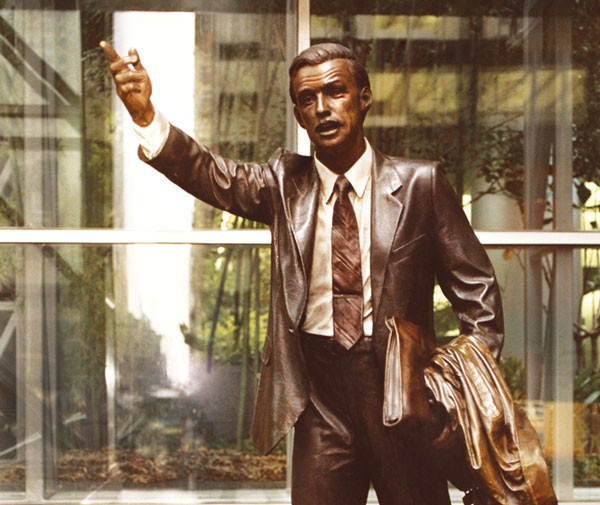On May 4, the Frieze Art Fair opened in New York City. While tony art fairs are not generally geared toward the general public (as their sole purpose is to sell big-ticket art), this fair had a free outdoor sculpture garden and a project space dedicated to John Ahearn. Ahearn and Rigoberto Torres created a contemporary version of their 1979 series of cast portraits called "South Bronx Hall of Fame."
The original series depicted the faces of a community and was created in a storefront window both visible and easily accessible from the sidewalk. While the updated version both embraces and critiques the commodification of art, the original is a perfect example of what great public art can be — accessible, site-specific and in collaboration with the community.
Also on May 4, in Pittsburgh, 15 sculptures by Seward Johnson from his "Man on the Street" series were placed on display outdoors at Gateway Center by the Laurel Foundation. Johnson, like Ahearn, uses casts of ordinary people. But here's the difference: Johnson's sculptures reflect the worst of what public art has increasingly become.
While Ahearn employs dynamic surfaces and colors to capture the very nature of his subjects, Johnson's do not convey the same depth of emotion and humanity. They are lackluster and hackneyed , featuring such urban clichés as a man hailing a cab, or a little girl twirling on a sign post — images that do very little to ignite or challenge the viewer's imagination.
To be fair, judging from the number of cities that host Johnson's work — and the number of people snapping pictures of his colossal sculptures like "Forever Marilyn" and "God Bless America" — his work has popular appeal. But that doesn't mean it's good public art. Public art has a specific role to play in a city. It should highlight the uniqueness of a place — its people, its history, its landscape — and it should help to connect that specificity to the people who live and work there.
With its riverfronts and open spaces, Pittsburgh has all the physical assets to make it a great city for public art. So here's a thought: Instead of importing work, use the many artists who live here and set up commissions to create public pieces that enhance the natural beauty and reflect the unique history of this particular municipality.















